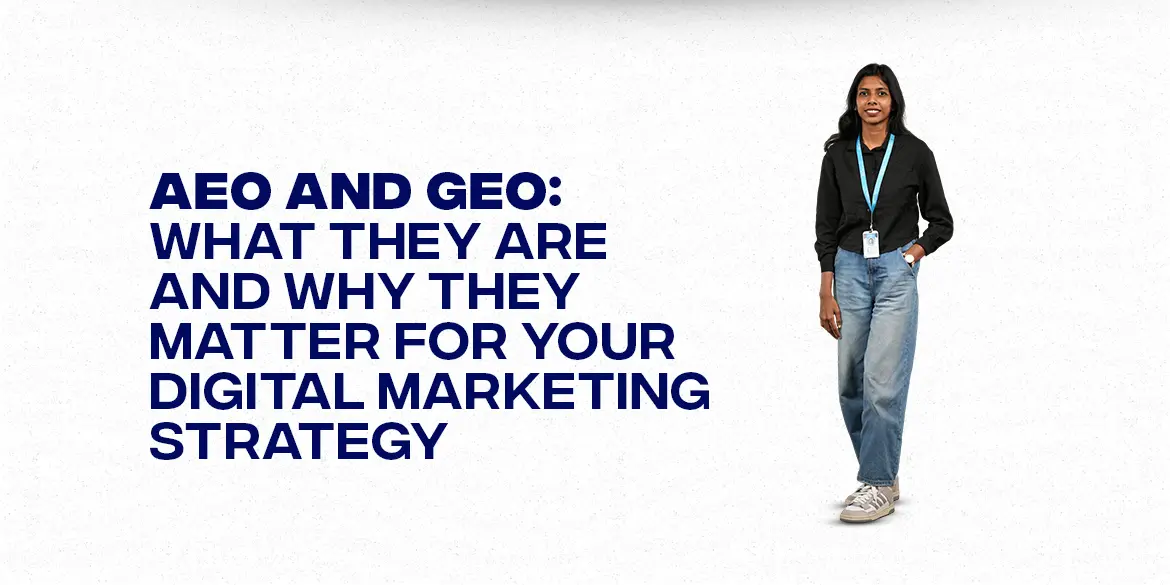
Search engines aren’t what they used to be.
They’re not just places where you throw in a few keywords and hope for clicks. These days, people are asking full questions, and search engines are doing their best to answer them right there, sometimes without even sending people to your site.
That’s where AEO and GEO step in.
You might’ve come across these terms. Maybe not. Either way, they’re starting to matter a lot more now, especially if you care about being found online; whether that’s for your brand, content, or a local business.
Let’s break this down in a way that actually makes sense.
What Is AEO?
AEO stands for Answer Engine Optimization.
Basically, it’s all about making your content more useful to people who are asking specific questions. Not just ranking for keywords, but actually answering what they want to know.
Think of questions like:
What is affiliate marketing?
How does Google Ads billing work?
Best tools to automate email marketing?
If your content answers those clearly and quickly, search engines are more likely to feature it. That could be in a featured snippet, a voice search result, or even in one of those new AI-generated summaries you see now.
So, AEO isn’t about writing more. It’s about writing better answers.
How is AEO Different from SEO?
SEO is about rankings.
AEO is about relevance.
With SEO, you’re mostly targeting keywords. With AEO, you’re targeting questions, and structuring your content so it’s easy to read and easy to pull from.
The two work together, but here’s the thing:
You could rank #1 and still get ignored if your content doesn’t feel helpful. On the flip side, a well-answered question might get picked up by Google even if your page isn’t top-ranked.
That’s why Q+A content is everywhere now, and why it works.
How to Start Using AEO?
You don’t need fancy tools or tech to start. Just change how you write:
Use actual questions as your subheadings
Give the answer in the first few lines, not five scrolls later
Keep your sentences short and focused
Use lists or bullet points when it makes sense
What Is GEO?
Now let’s talk about GEO, short for Geo-targeted Optimization.
This one’s simpler than it sounds. It just means you’re tailoring your content or campaigns for a specific location.
People in Kochi don’t always search the same way as people in Delhi. Even if they want the same service, the language they use or the platforms they trust might be different.
That’s where GEO comes in.
How GEO Works in Real Life?
Let’s say you’re promoting an AI integrated digital marketing course.
Someone in Kochi searching “AI digital marketing course in Kochi” is likely looking for something nearby, something they can relate to. Not just a random online course.
If your website or blog:
Mentions Kochi naturally
Includes examples that local people care about
Talks about digital marketing in that local context
You’ll probably connect better. And you’ll probably show up higher for that search.
GEO isn’t about stuffing the city name everywhere. It’s about understanding your audience’s place literally, and reflecting that in your content.
Why GEO Actually Matters?
Search is becoming more local and more personal.
If someone’s searching “best SEO agency near me” or “restaurant Facebook ads in Kerala,” they’re not just browsing. They’re probably close to buying. And they want answers that make sense where they are.
GEO helps you be that answer.
It’s not only about ranking higher. It’s about connecting better.
Can AEO and GEO Work Together?
Yes, and they should.
Imagine someone Googles:
“How to run Facebook ads for restaurants in Kerala”
What are they expecting?
A straight-up answer (AEO)
With a bit of local flavour (GEO), maybe some examples or tips that apply to restaurants in Kerala
If your content checks both boxes, it becomes 10x more useful.
You’re not just showing up. You’re showing up with something they actually need.
That’s when people click. That’s when people trust you. That’s when leads happen.
Do You Need Tools to Do All This?
Eventually, maybe.
There are tools for structured data, local SEO plugins, geo-tagged ads, and all that. But honestly? To begin, you don’t need anything fancy.
You just need to:
Know what questions your audience is asking
Understand where they’re coming from
Answer clearly
Keep things human and relevant
That’s already better than most blogs floating out there.
Final Thoughts
Look, AEO and GEO aren’t some advanced-level hacks anymore. They’re quickly becoming the basics for digital marketers, content creators, and even local business owners.
Search engines are shifting. So the way we write, plan, and publish has to shift too.
If you focus on answering real questions, and speaking to real people in real places, you’re already ahead of most people who are still keyword-stuffing and hoping for clicks.
And if you want to actually learn how to use AEO, GEO, and other smart strategies with hands-on tools, check out the AI integrated digital marketing course in Kochi at Learn with Beeka.
